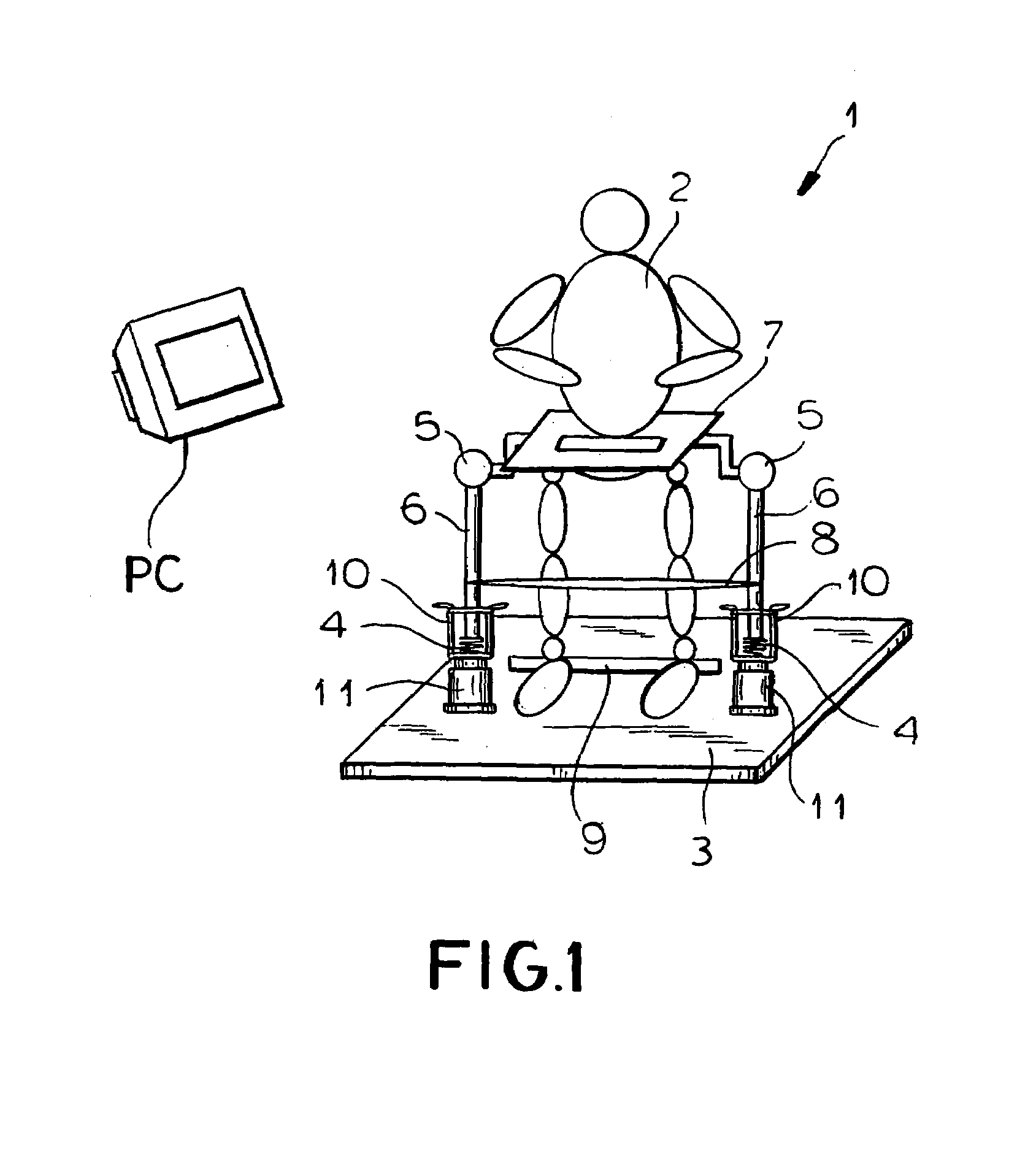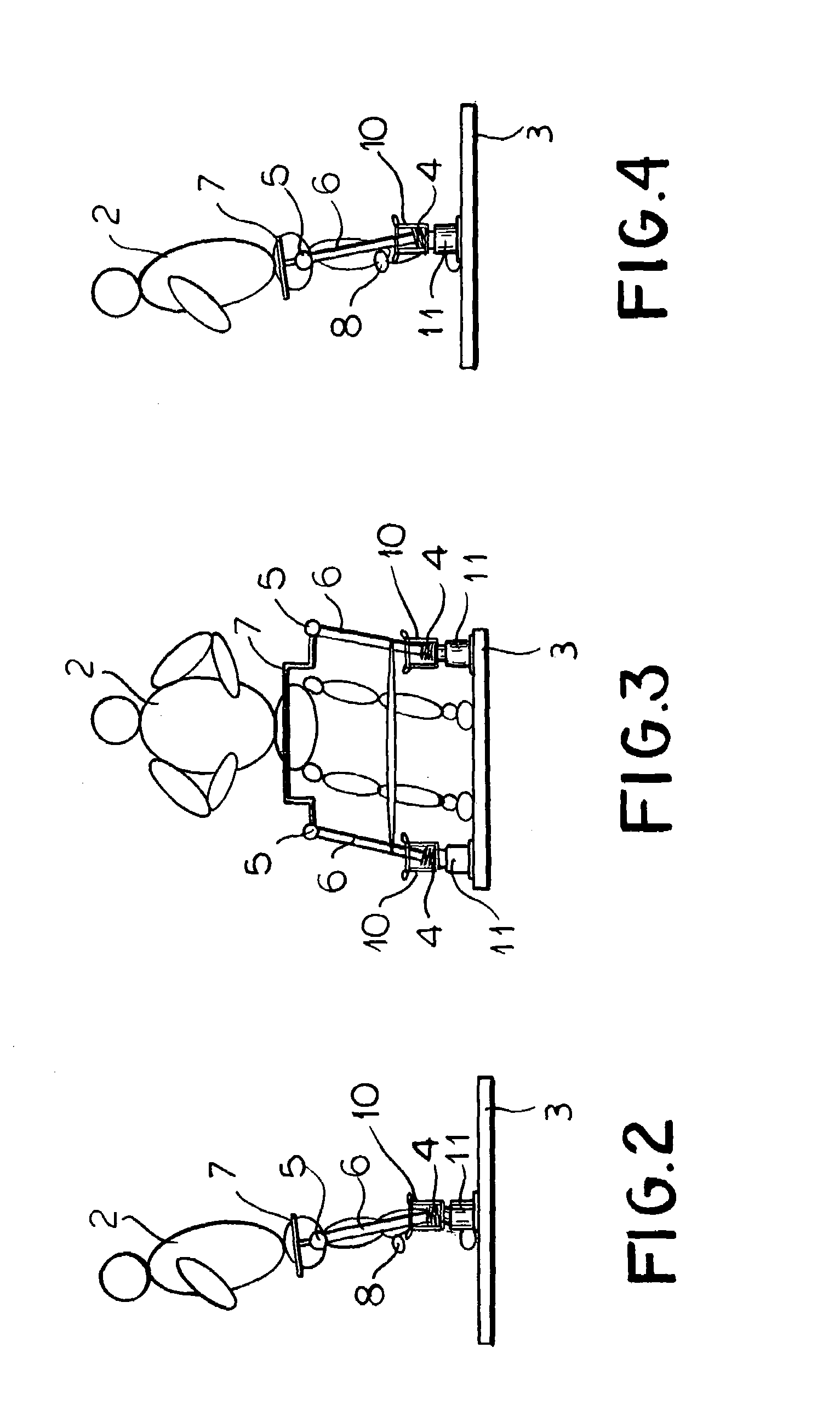Balance re-trainer
a technology of retraining equipment and balance, which is applied in the field of balance training equipment, can solve the problems of reducing the ability of an impaired individual to effectively maintain balance, the inability to apply methods to a group of severely impaired individuals, and the significant limitation of the outcome of the training process in the safety implementation. achieve the effect of reducing the ability to maintain balance, simple and inexpensive construction
- Summary
- Abstract
- Description
- Claims
- Application Information
AI Technical Summary
Benefits of technology
Problems solved by technology
Method used
Image
Examples
Embodiment Construction
[0044]The preferred embodiment of the present invention disclosed herein provides an impaired individual with a fall-safe balancing environment, where the balancing efforts of a standing individual are augmented by stabilizing forces acting at the level of pelvis in the sagittal and frontal planes of motion, assisting the balancing activity of ankle muscles (sagittal plane) and ankle and hip muscles (frontal plane) and at the level of shanks, assisting the knee extensor muscles. The level of supporting forces can be varied from zero up to the level where no balancing activity is needed from the standing subject. Additionally, movement in the sagittal and frontal planes, acquired by transducers, is fed to an electronic interface which transforms the current inclinations into computer mouse, joystick or similar pointing device signals which are interfaced to a personal computer (PC). Thus, a standing subject, by voluntarily changing the posture in the sagittal and frontal planes, can ...
PUM
 Login to View More
Login to View More Abstract
Description
Claims
Application Information
 Login to View More
Login to View More - R&D
- Intellectual Property
- Life Sciences
- Materials
- Tech Scout
- Unparalleled Data Quality
- Higher Quality Content
- 60% Fewer Hallucinations
Browse by: Latest US Patents, China's latest patents, Technical Efficacy Thesaurus, Application Domain, Technology Topic, Popular Technical Reports.
© 2025 PatSnap. All rights reserved.Legal|Privacy policy|Modern Slavery Act Transparency Statement|Sitemap|About US| Contact US: help@patsnap.com



